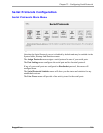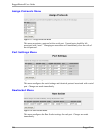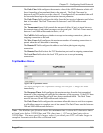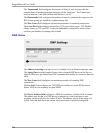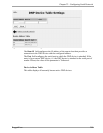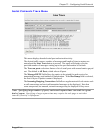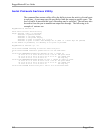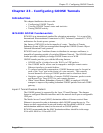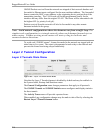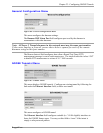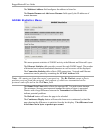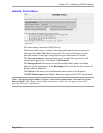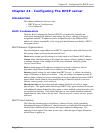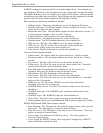
Chapter 23 - Configuring GOOSE Tunnels
Chapter 23 - Configuring GOOSE Tunnels
Introduction
This chapter familiarizes the user with:
• Configuring GOOSE Tunnels
• Viewing GOOSE Tunnel status and statistics
• Tracing GOOSE activity
IEC61850 GOOSE Fundamentals
IEC61850 is an international standard for substation automation. It is a part of the
International Electrotechnical Commission’s (IEC) Technical Committee 57 (TC57)
architecture for electric power systems.
One feature of IEC61850 is the fast transfer of events. Transfers of Generic
Substation Events (GSEs) are accomplished through the GOOSE (Generic Object
Oriented Substation Event) protocol.
IEC61850 uses Layer 2 multicast frames to distribute its messages and hence, is
incapable of operating outside of a switched Ethernet Network. The GOOSE tunnel
feature provides a capability to bridge GOOSE frames over a WAN.
GOOSE tunnels provides you with the following features:
• GOOSE traffic is bridged over the WAN via UDP packets.
• One GOOSE traffic source can be mapped to multiple remote router
Ethernet interfaces in mesh fashion.
• To reduce bandwidth consumption, GOOSE daemons may be located at
each of the “legs” and at the center of a star network. The centrally
located daemon will accept GOOSE packets and re-distribute them.
• Statistics reports availability of remote GOOSE daemons, packet counts
and Round Trip Time (RTT) for each remote daemon.
• When Virtual Router Redundancy Protocol (VRRP) is employed, GOOSE
transport is improved by sending redundant GOOSE packets from each VRRP
gateway.
Layer 2 Tunnel Daemon Details
The GOOSE protocol is supported by the Layer 2 Tunnel Daemon. The daemon
listens to configured Ethernet interfaces and to the network itself upon a configurable
UDP port.
The Media Access Control (MAC) destination address of frames received from
Ethernet is inspected in order to determine which GOOSE group they are in. The
frames are then encapsulated in network headers and forwarded (with MAC source
and destination addresses intact) to the network as GOOSE packets.
IEC61850 recommends that the MAC destination address should be in the range
01:0c:cd:01:00:00 to 01:0c:cd:01:01:ff.
RuggedCom 213



